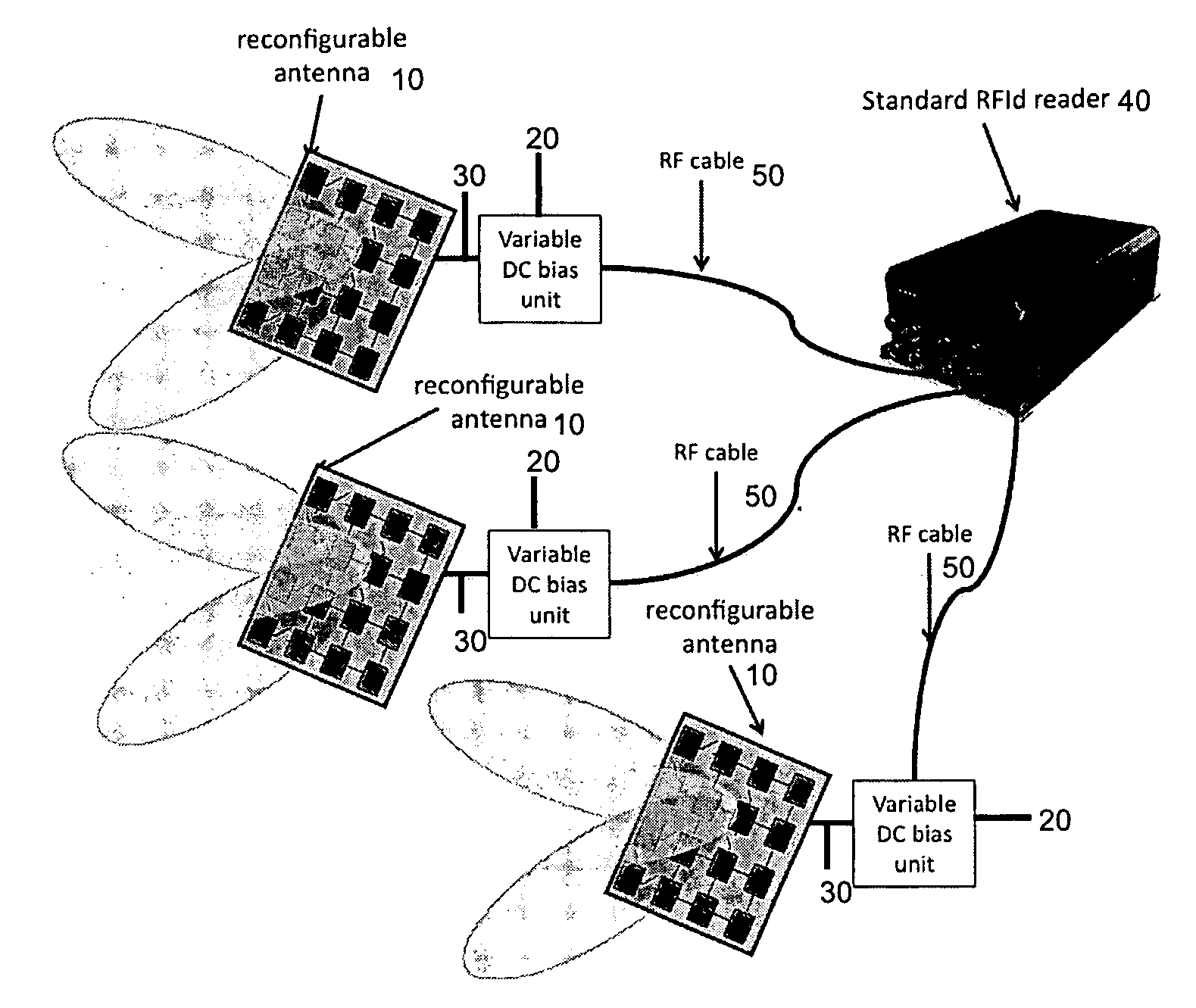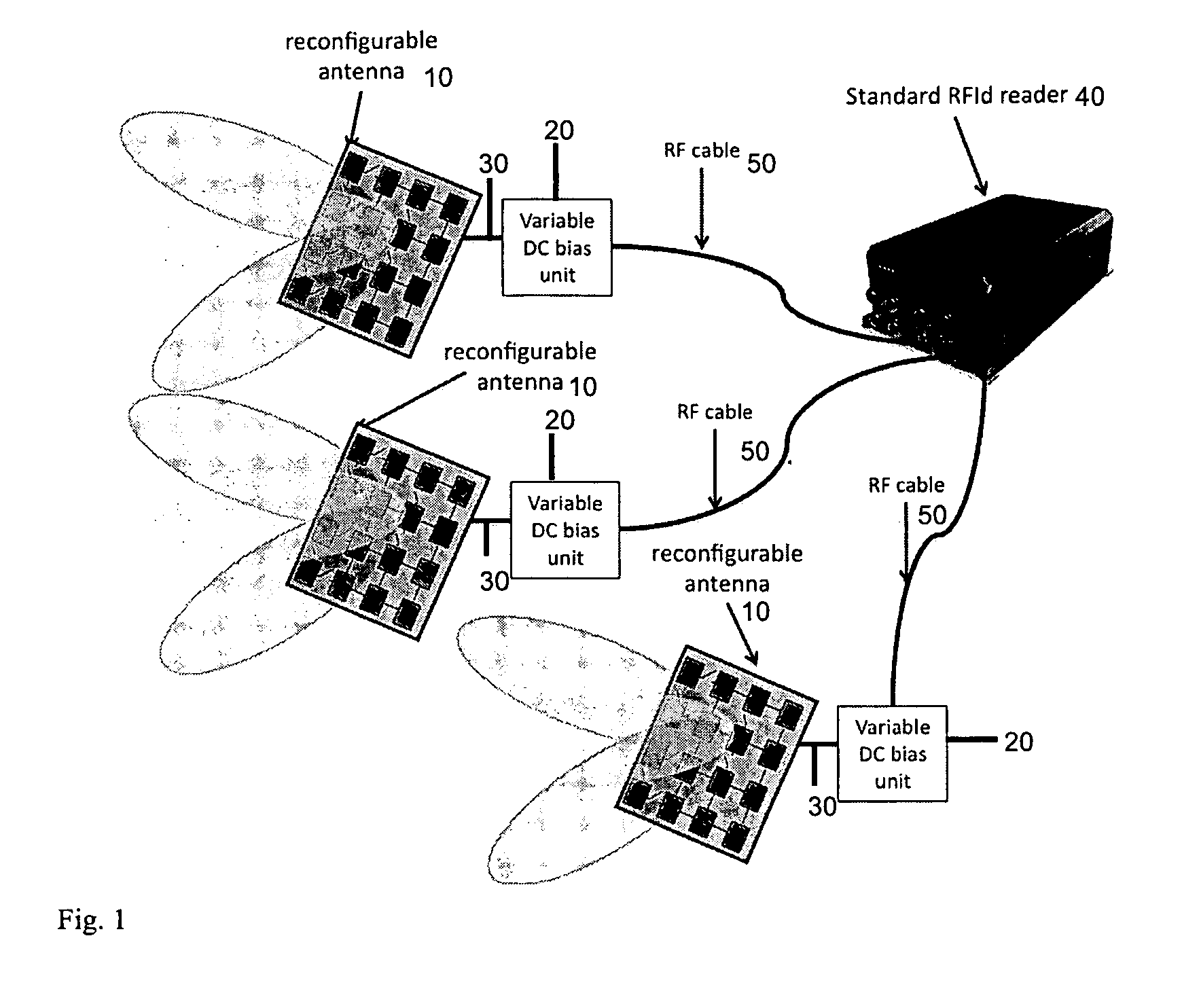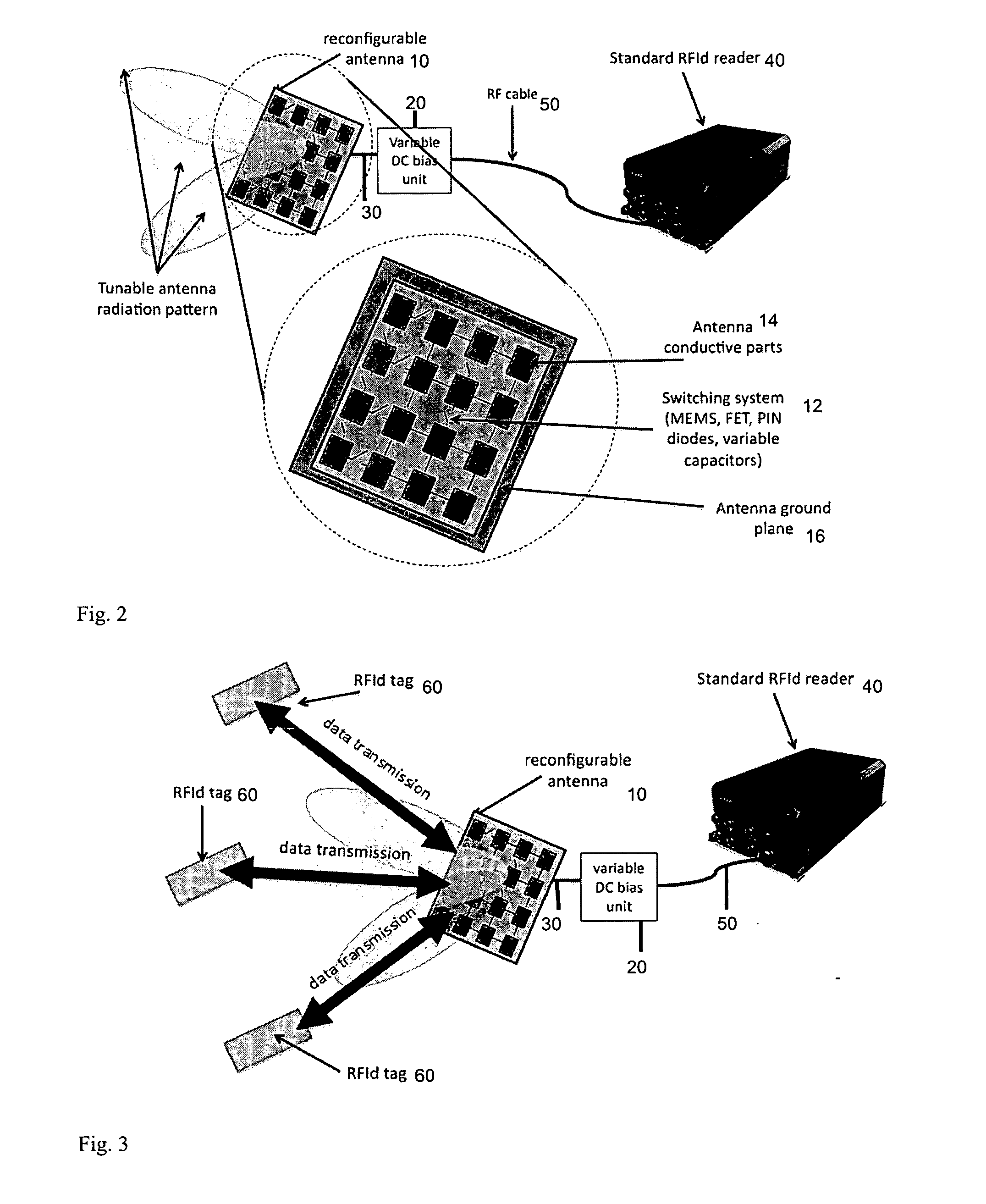Reconfigurable antenna system for radio frequency identification (RFID)
a radio frequency identification and reconfigurable technology, applied in the direction of antennas, non-resonant long antennas, sensing record carriers, etc., can solve the problems of limited prior art systems, difficult to properly expose the transponder to the radiated electromagnetic field and identify it with standard rfid antennas, and limited antenna range. , to achieve the effect of increasing the reading reliability of rfid systems
- Summary
- Abstract
- Description
- Claims
- Application Information
AI Technical Summary
Benefits of technology
Problems solved by technology
Method used
Image
Examples
Embodiment Construction
[0022]A detailed description of illustrative embodiments of the present invention will now be described with reference to FIGS. 1-9. Although this description provides a detailed example of possible implementations of the present invention, it should be noted that these details are intended to be exemplary and in no way delimit the scope of the invention.
[0023]Current antenna solutions employed with RFId readers are not reconfigurable and typically radiate the energy statically with radiation patterns with fixed shape and polarization. In case of high tag density or when tags are used with non-compliant RFId materials (e.g. liquid, metal) or when they are applied on goods that can not be moved, it is difficult to properly expose the transponder to the radiated electromagnetic field with standard RFId antenna systems. In accordance with the invention, it is desired to dynamically change the direction in which the energy is radiated or the polarization of the radiated field so that th...
PUM
 Login to View More
Login to View More Abstract
Description
Claims
Application Information
 Login to View More
Login to View More - R&D
- Intellectual Property
- Life Sciences
- Materials
- Tech Scout
- Unparalleled Data Quality
- Higher Quality Content
- 60% Fewer Hallucinations
Browse by: Latest US Patents, China's latest patents, Technical Efficacy Thesaurus, Application Domain, Technology Topic, Popular Technical Reports.
© 2025 PatSnap. All rights reserved.Legal|Privacy policy|Modern Slavery Act Transparency Statement|Sitemap|About US| Contact US: help@patsnap.com



